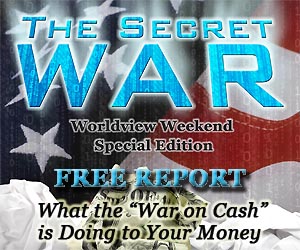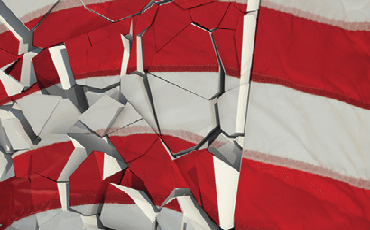Violence, Religion and European History
Violence, Religion and European History
A French farmhouse 150 kilometers south of Paris became the central place to reunite our family members (living in Berlin, London, Bordeaux, Washington DC, Philadelphia and San Diego). Little did we realize the sensory overload of historical vignettes we would experience.
All nineteen of us (two in utero) visited the magnificent cathedral of Vezelay, a medieval church where Bernard de Clairvaux launched the second crusade in AD 1200 and where the remains of Mary Magdalene supposedly rest. Nestled in the shadows of this great cathedral, the local bookstore featured the French translation of
you guessed it, Dan Brown's Da Vinci Code, which features Mary Magdalene.
The following week, some visited Aix-en-Provence, where I taught New Testament for 18 years. We visited friends and colleagues and I preached in the church we helped to plant. In the Museum of the Desert in the nearby Cévennes mountains we saw the Bibles and portable pulpits of the French Huguenots, persecuted from 1572 to 1789. Many endured excruciating deaths (some had every bone broken) for attending outlawed Protestant church services in the "desert" (the fields or woods).
From Aix, we drove through Orange, site of the largest intact Roman theatre, which seats 50,000 and whose splendid architecture displays to this day the power and pomp of pagan Rome. In Lyons, we stayed for two days with a former student of mine, Francis Foucachon, pastor of a Protestant Church there. After church, his son showed us the Roman ruins where, in AD 177, forty members of the fledgling Christian church were fed to lions for the viewing pleasure of the local populace.
Our last stop was Berlin, where our daughter and son-in-law are missionaries. The city is both impressive and depressing. The display of pagan power and splendor was never more evident in our travels than in the Pergamum Museum, which houses the massive, blue-tiled gates of ancient Babylon and (in a room half the size of a football field) the reconstructed entrance to the Pergamum Altar. Elegant steps rise sixty feet in the air, between huge Greek colonnades. Christ's letter to the little Christian community in Pergamum calls the city the place "where Satan has his throne" (Revelation 2:13). Those early Christians doubtless hurried by the pagan altar, intimidated by might and glory of religious paganism. They never knew that the gates would end up in a Berlin museum!
Sachsenhausen concentration camp, a 45 minute train ride from town, brought the horrors of godless power closer to our time. We touched gallows where prisoners were hanged; peered into cells where bodies had rotted away; wandered through white-tiled "clinic" rooms where gruesome experiments were performed; observed ovens where cadavers were incinerated-all deeds done within my lifetime in the name of human progress.
Checkpoint Charlie embodied another memory of the recent, brutal past of Europe. As I looked down Friedrichsstrasse, I could imagine the daily confrontation of Soviet and American tanks and the courageous attempts of East Germans to get to the other side of the wall. When finally freed from twelve years of the Nazi Reich, much of Germany immediately succumbed to totalitarian communism, which lasted until 1989. The Soviets, too, incarcerated their enemies in Sachsenhausen after the War.
Extreme cruelty has temporarily ceased in Europe, but the religious battle continues there, as elsewhere. Dedicated to a global ethic of non-violence, one room at the Checkpoint Charlie Museum features Gandhi, Mikhail Gorbachev and Hans Kung, one of the leading theologians of contemporary religious syncretism. Here the past struggle for Western democracy and Christian ethical values against Nazi paganism and godless Soviet Marxism is nowhere remembered. The great East/West power blocs are a thing of the past. Planetary oneness relativizes the great moral issues that divided the world in the epic struggles of the twentieth century. Today's thinking judges both sides guilty of militarism and exclusivism. A new global tolerance and the unity of the world's religions becomes the hope for humanity.
We discovered this religious globalism in the oddest of places-the Huguenot Museum of Berlin, where we saw history from a German perspective. Hounded from their country, some persecuted French believers escaped to Berlin, were the Lutheran population welcomed them. The Prussian Emperor Frederic William II gave them a magnificent Huguenot church "in perpetuity," which now, alas, stands as shrine to liberal theology and dabbles in the "new spirituality" of pagan mysticism.
These fascinating events of our summer vacation underscored for me the sobering relationship between religious faith and human cruelty in European history. Under certain circumstances, the growing struggle between biblical faith and pagan planetary spirituality could lead to a return of cruelty, in spite of calls for peace and unity.
Christians should not be surprised if history repeats itself. But we should not be distressed either, for we know that however impressive and frightening the gates of Hell may appear, they will not prevail. They will end up in some celestial museum, silent witness to the triumph of God's amazing grace and His eternal kingdom.
Peter JonesChristian Witness to a Pagan Planet
Support Our Broadcast Network
Trending Stories
Latest
We're a 100% Listener Supported Network
3 Simple Ways to Support WVW Foundation
Make Monthly Donations
-or-
A One-Time Donation
-
Mail In Your Donation
Worldview Weekend Foundation
PO BOX 1690
Collierville, TN, 38027 USA -
Donate by Phone
901-825-0652
















